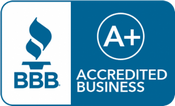
Revenue Recognition Update: It's time.
Published on September 20, 2016
It will be 2018 before new revenue recognition rules go into effect, but that doesn’t mean you should wait to implement the changes set forth by FASB. This update affects all businesses and requires some major changes to reporting and accounting practices. Planning to implement the new model should begin now.
To best prepare you, we’ve compiled some of the most frequently asked questions about the revenue recognition update, and have an upcoming educational event devoted to the topic. Please read on for more details, and plan on joining us next week.
What is this “update” anyway?
Announced back in May 2014, the revenue recognition standards update introduced a new model for revenue recognition from contracts with customers. The new model replaces virtually all existing U.S. Generally Accepted Accounting Principles (GAAP) revenue recognition guidance and applies to all entities and industries (dictating also that legacy GAAP should not be used to supplement the new guidance). Now, companies will need to calculate the top lines of their income statements using a single, principles-based approach. The new model is effective January 1, 2017 for calendar-year public entities. Nonpublic organizations have another year, starting after December 15, 2018. Early adoption is permitted.
Is my business affected?
Quite likely, yes. If you have contracts with customers for the transfer of goods and/or services, even if they not financial, this update will likely affect your business.
How much things will change depends on your industry. Companies that currently follow specific industry-based GAAP, such as software, real estate, asset management and wireless carrier companies, will feel the biggest changes. But virtually all companies will be affected by the expanded disclosure requirements.
Why has it taken so long to implement these changes?
The updated revenue recognition guidance has encountered significant opposition from companies and trade groups because of the timing of the proposed changes, the lack of available information technology resources in the workplace, and the difficulty of updating internal controls and accounting policies, as the new rules require management to make more judgment calls based on overriding principles. In response to the protest, in July 2015, the FASB agreed to give companies an extra year to comply with this landmark standard.
In July 2016, the FinREC published working drafts of interpretive guidance to address specific implementation issues related to the revenue recognition standard. The 20 drafts apply to nine industries:
- Aerospace and defense
- Airlines
- Broker-dealers
- Engineering and construction contractors
- Gaming
- Health care
- Asset management
- Not-for-profit organizations
- Software
The drafts will help U.S. companies implement the principles-based guidance by providing industry-specific examples.
How do I prepare for the change?
In order to report based on the objective of the update, which is to depict the transfer of goods and services based on the amount and expectations of the customer, companies need to follow five steps and provide the following accounting details:
- Identify the contract with a customer.
- Identify the performance obligations in the contract.
- Determine the transaction price.
- Allocate the transaction price to the promises in the contract.
- Recognize revenue only when the goods or service is complete.
Essentially, you will need to update your contracts to provide this new level of detail and make sure accounting processes only recognize revenue from these contracts upon completion of the work promised to the customer.
There is no time like the present to begin the implementation process. We invite you to reach out for us for assistance, first by attending our event next week. We have a diverse team of panelists in place who can help get you started on the implementation process. A series of big changes is ahead and, as always, we’re here to help.






